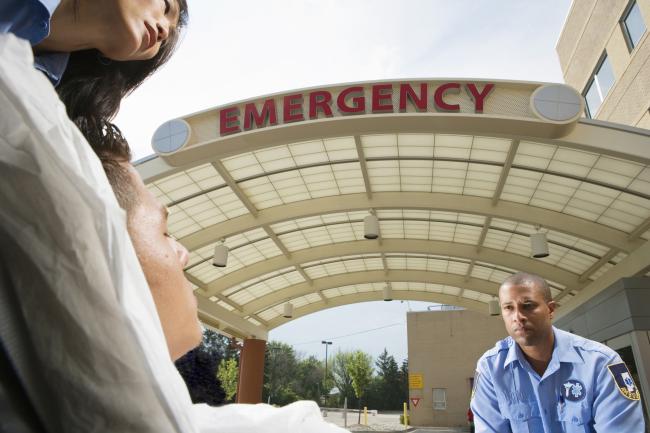Emergency department closures impact treatment quality nearby
September 17, 2019
Emergency department closures impact treatment quality nearby
At a Glance
- When emergency departments closed, people treated for a heart attack at nearby crowded hospitals had worse outcomes.
- Emergency department closures may contribute to health disparities experienced by people in lower-income areas.

In a medical emergency like a heart attack or a motor vehicle accident, every minute counts. How far people have to travel for care—and how crowded a hospital is when they arrive—can influence health outcomes. These factors may be altered by the availability of other medical facilities around an emergency department.
Drs. Renee Hsia from the University of California, San Francisco and Yu-Chu Shen from the Naval Postgraduate School designed a study to better understand how emergency department closures or openings affect the care at nearby hospitals.
The researchers collected data from all emergency departments operating in the U.S. between 2001 and 2013. This comprised more than 3,700 hospitals treating over 1 million patients. In addition to reported closings and openings, the researchers examined changes in driving time between emergency departments and the closest neighboring facilities.
The team compared outcomes for heart attack patients between hospitals over the 13-year period. These included rates of death 30 days, 90 days, and 1 year after admission. The researchers also looked at the likelihood of receiving a standard treatment called percutaneous coronary intervention (PCI) and of hospital readmission within 30 days.
Changes in outcomes after a nearby emergency department closure or opening were also compared between hospitals that were already operating at or near full capacity and those that were less crowded. The study was funded by NIH’s National Heart, Lung, and Blood Institute (NHLBI). Results were published in the September 2019 issue of Health Affairs.
Emergency departments already operating at high capacity bore the brunt of nearby closures. When closures increased the driving time to a nearby emergency department by 30 minutes or more, the 1-year mortality rate for heart attack patients at crowded hospitals increased by 8%. The likelihood of receiving PCI dropped by 4%, and the 30-day readmission rate increased by 6%.
Hospitals that were less crowded to begin with did not experience the same negative effects of nearby closures. One-year mortality rates actually improved for less crowded facilities when a nearby closure increased driving time by 30 minutes or more.
High-occupancy hospitals benefitted the most from a nearby emergency department opening. When a new emergency department opened and reduced the driving time between hospitals by at least 30 minutes, 30-day mortality for heart attack patients dropped by 12% at crowded facilities. The likelihood of receiving PCI increased by 12%.
“We now have evidence that hospital closures affect other hospitals, and they do so in different ways. Hospitals that are already crowded will likely be unable to maintain the same quality when a nearby emergency department closes,” says Hsia.
Emergency department closures are more common in lower-income areas. “Such closures may inadvertently increase the health disparities that we are trying to mitigate,” says medical officer Dr. Nicole Redmond of NHLBI.
Related Links
- Stress Links Poverty to Inflammation and Heart Disease
- Nurse Staffing, Education Affect Patient Safety
- Fending Off Cardiovascular Disease
- Can You Recognize a Heart Attack or Stroke? What To Do When Every Moment Counts
References
Emergency Department Closures And Openings: Spillover Effects On Patient Outcomes In Bystander Hospitals. Hsia RY, Shen YC. Health Aff (Millwood). 2019 Sep;38(9):1496-1504. doi: 10.1377/hlthaff.2019.00125. PMID: 31479367.
Funding
NIH’s National Heart, Lung, and Blood Institute (NHLBI).


